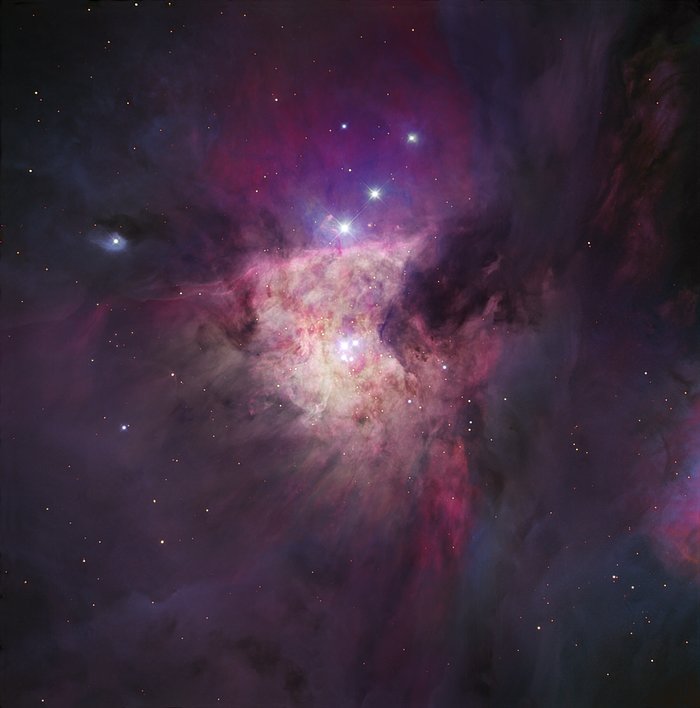The Trapezium cluster
The Orion Nebula is arguably the finest of all nebulae within the Milky Way visible from the Northern Hemisphere. With a gaseous repository of 10,000 suns, and illuminated by a cluster of hot young stars, the clouds of Messier 42 — as it is also known — glow with fantastic colours and shapes, giving us a bird’s eye view of one of the greatest star forming nurseries in our part of the Milky Way. Messier 42 is a complex of glowing gas, mostly hydrogen but also helium, carbon, nitrogen, and oxygen in decreasing amounts, located 1,500 light-years away. At its very heart, we find the Trapezium, a group of four very hot stars that illuminate the nebula. They are the brightest of an extended cluster of several thousand young stars many of which lie unseen within the opaque gas and dust. Amazingly, whilst the Orion Nebula is easy to identify with the unaided eye, there is apparently no written record of its existence before the 17th century.
This image is based on data acquired with the 1.5 m Danish telescope at the ESO La Silla Observatory in Chile, through three filters (B: 60 s, V: 30 s, R: 21 s). East is at the upper right corner and North is at the lower right.
ESO/IDA/Danish 1.5 m/R.Gendler, J.-E. Ovaldsen, and A. Hornstrup
About the Image
| Id: | trapeziumdk15b |
| Type: | Observation |
| Release date: | 3 December 2009, 23:18 |
| Size: | 2030 x 2053 px |
About the Object
| Type: | Milky Way : Nebula |
| Distance: | 1400 light years |
| Constellation: | Orion |
| Category: | Nebulae |
Wallpapers
Coordinates
| Position (RA): | 5 35 21.23 |
| Position (Dec): | -5° 24' 45.62" |
Colours & filters
| Band | Telescope |
|---|---|
| Optical B | Danish 1.54-metre telescope |
| Optical V | Danish 1.54-metre telescope |
| Optical R | Danish 1.54-metre telescope |
